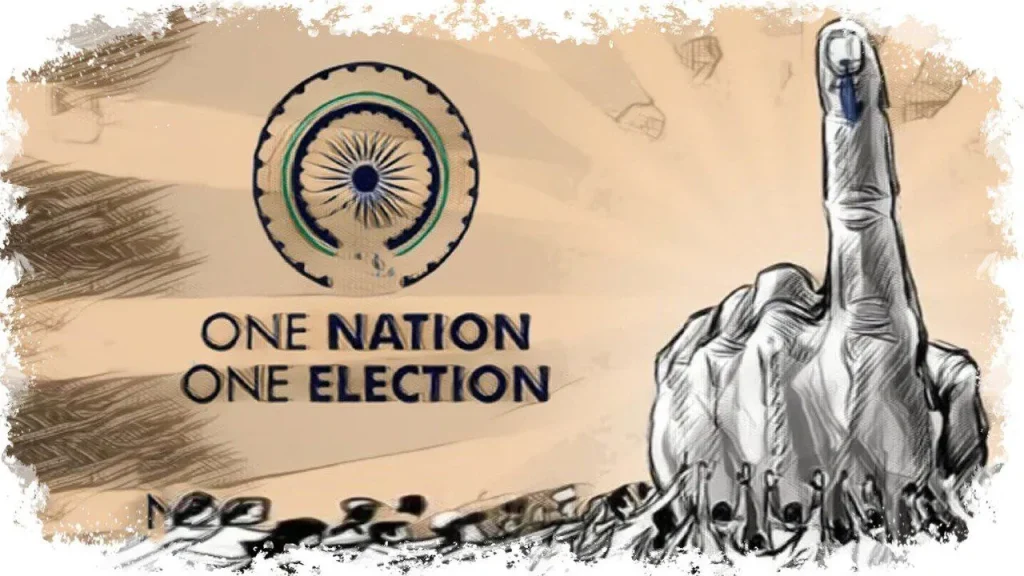Context:
The Tamil Nadu Assembly passed two resolutions opposing the Union government’s ‘One Nation, One Election‘ idea and proposed delimitation after 2026.
Key highlights of the proposed resolutions:
The resolution urged the Union Government that the delimitation process to be carried out after 2026 based on the census should not be carried out.
- The population-based seats in the State Assemblies and the two Houses of Parliament shall be maintained based on the population of the 1971 census.
• The resolution said that States such as Tamil Nadu should not be penalized for implementing various socio-economic development programs and welfare schemes for the benefit of people over the past 50 years.
• The resolution also urged the Union government not to implement the policy as the ‘theory of One Nation, One Election is against the basis of democracy and also not enshrined in the Constitution of India.’
• The resolution further said that the elections to Local Bodies, State Assemblies, and Parliament were held at different times and the proposed policy went against the idea of democratic decentralization.
One Nation One Election’ System (ONOE):
- One Nation One Election proposes holding simultaneous elections for all states and the Lok Sabha every five years.
- This includes restructuring the Indian election cycle such that elections for the states and the center correspond. This means that people will vote for members of the LS and state assemblies on the same day (or in phases, as the case may be).
Past examples of simultaneous elections:
- Simultaneous polling for states and Lok Sabha is not a new concept. Historically, India has held simultaneous elections in 1952, 1957, 1962, and 1967.
- After the dissolution of various Legislative Assemblies in 1968-69, this rule was quickly repealed. Since then, the Indian electoral system has held separate polls for the Centre and states.
Need for a constitutional amendment for ONOE:
- Articles 172 and 83 ensure a five-year term for elected Lok Sabha and state assemblies unless dissolved earlier.
- Article 85 of the Indian Constitution grants the President the authority to call Parliamentary sessions every six months or less. The President has the power to adjourn either House of Parliament and dissolve the Lok Sabha.
- To promote organized stability in the Lok Sabha and state assemblies, amendments to the Anti-Defection Law and the Representation of People Act, 1951 are required.
- Article 356 addresses governance and constitutional failure in a state, including President’s Rule.
International practice:
- South Africa: Every five years, elections are held there for the National Assembly, Provincial Legislature, and Municipal Councils.
- Sweden: Elections for County Councils and Municipal Councils take place with general elections. Municipal assemblies usually hold elections on the second Sunday of September every five years.
- Belgium: Five distinct election kinds are available for voting in Belgium. The European elections coincide with the regular five-year interval for Federal Parliament elections.
Merits:
- Cost Saving: By doing away with the requirement for separate election cycles, simultaneous elections save money.
- Effective Use of Security Force: Election coordination facilitates the more effective use of security troops for other objectives.
- Higher Turnout: Since voters only cast ballots every few years, they are less tired, which could increase turnout.
- Emphasis on Long-Term Governance: Concurrent elections incentivize policymakers to give precedence to long-term governance above immediate benefits.
Demerits:
- Constitutional and Federalism Issues: Holding simultaneous elections could necessitate amending the constitution and raise questions about the federal structure of the Indian political system.
- Effect on Regional Parties: Concurrent elections can give the bigger national parties the upper hand, which could hurt regional parties.
- Effect on Voter Behavior: In concurrent elections, voters may mix national and state-specific problems, making it harder for state-level politics to be distinguished from one another.
- Coordination Challenges: It can be challenging to coordinate elections in a diverse democracy such as India, especially if governments begin to lose faith in their assemblies.
Conclusion:
Simultaneous voting is a concept whose time has come. However, because the issue impacts the federal framework of the Constitution, it must be thoroughly discussed and debated throughout the political spectrum to comfort regional party concerns. This will make it easy to execute the notion throughout the country.
Also Read:
Standing Committee on Finance Submit Report on Insurance Sector

